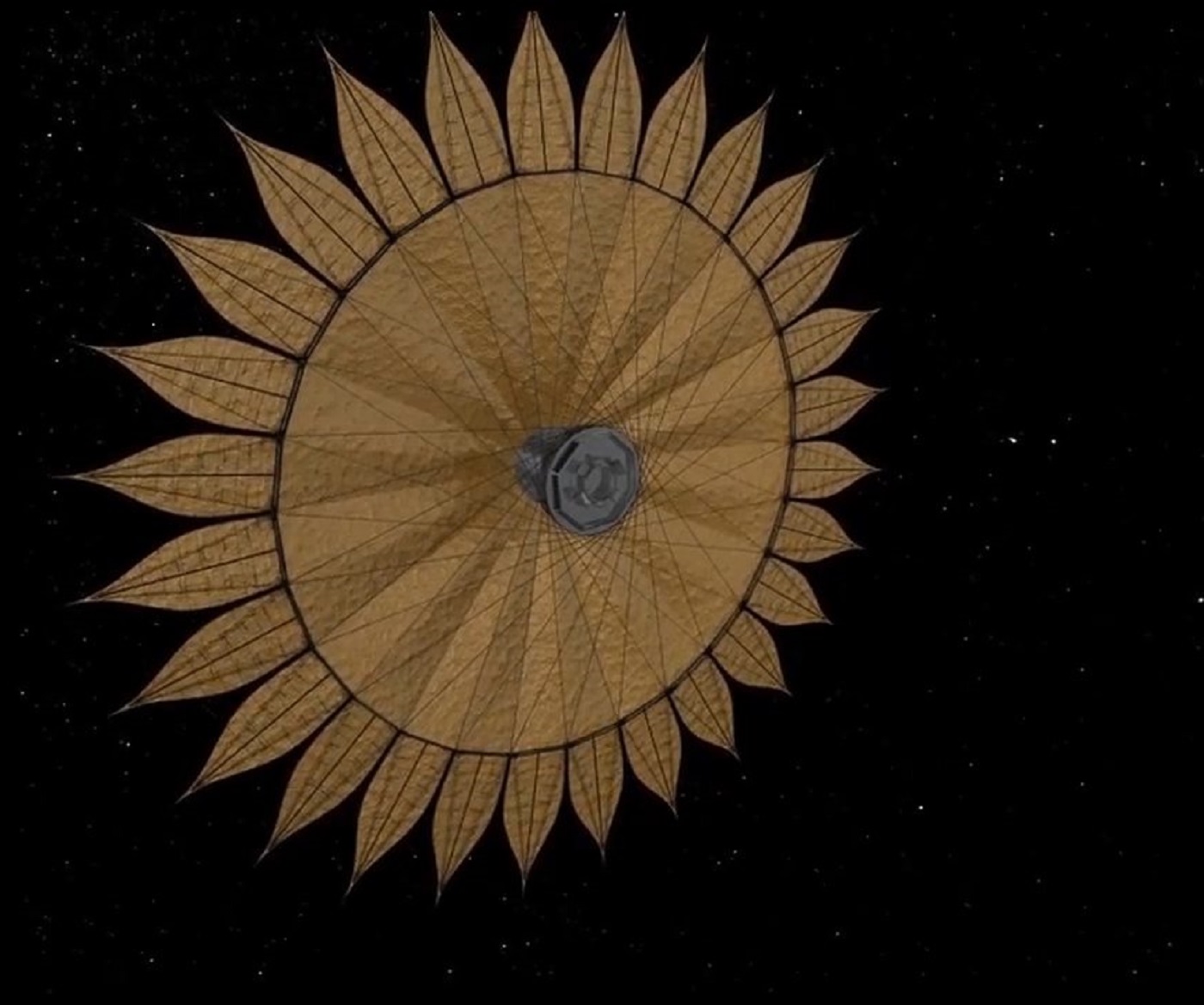Searching the universe for Earth-like planets is like looking for a needle in a haystack. To further this exploration, NASA is supporting the early-stage study of a concept for a hybrid observatory that would combine a ground-based telescope with a space-based starshade. These devices block glare from stars when observing planets outside our solar system, known as exoplanets, from the ground. The Hybrid Observatory for Earth-like Exoplanets (HOEE) would convert the largest ground telescopes into the most powerful planet finders ever made – and the public has an opportunity to be part of this groundbreaking endeavor.
The Ultralight Starshade Structural Design Challenge asks participants to develop a lightweight starshade structure that could be used as part of the HOEE concept. The ideal design would allow for compact packaging and successful deployment once in its Earth orbit. It must also have the lowest possible mass so that chemical thrusters can keep it aligned during observations and propulsion systems can change its orbit to observe different targets – all while using as little fuel as possible.
One way to pinpoint an exoplanet in the vast darkness of space and determine its potential habitability, is to observe the light it reflects as it orbits its star. This light is influenced by surface minerals, oceans, continents, weather, vegetation, and the gases that make up its atmosphere. But the star often produces a glare when observing the planets from ground-based telescopes, disrupting observations. Starshades cast a dark shadow over the star without blocking the light of its planets, providing observers a better view.
“The hybrid observatory might help us answer some of the most pressing questions about extraterrestrial life,” said Dr. John Mather, senior astrophysicist at NASA’s Goddard Space Flight Center in Greenbelt, Maryland, and senior project scientist for the James Webb Space Telescope. “Observing many systems would help answer the question of why configurations like our own are rare and why none is quite like home. It is truly exciting that the public can be part of this revolutionary effort. I can’t wait to see what ideas they bring to the table.”
The top five submissions will share a prize purse of $7,000. The contest deadline is Aug. 22. The challenge is administered by GrabCAD. For more information about the challenge, visit: https://grabcad.com/challenges/nasa-challenge-ultralight-starshade-structural-design
This contest supports the NASA Innovative Advanced Concepts (NIAC) study of the HOEE concept. The NASA Tournament Lab, part of the Prizes, Challenges, and Crowdsourcing program, manages the challenge. The program supports public competitions and crowdsourcing as tools to advance NASA research and development and other mission needs. NIAC and the Prizes, Challenges, and Crowdsourcing program are part of NASA’s Space Technology Mission Directorate.
Learn more about opportunities to participate in your space program via NASA prizes and challenges at:
https://www.nasa.gov/solve





























